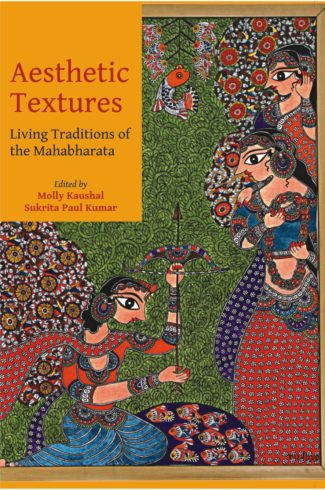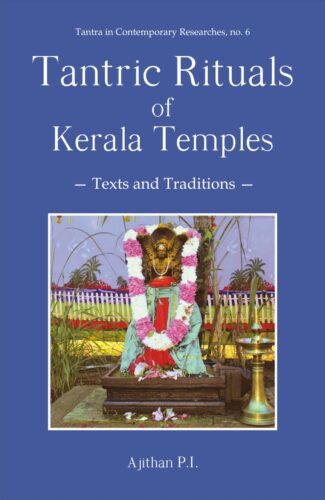

Mekong-Ganga Axis...
Mekong-Ganga Axis
by: Pankaj Mittal , Ravi Bhushan , DaisyIndia’s association with the South-East Asian countries, especially those on either side of the Mekong River, is well known. It analyses India’s past and present relationship in the domains of architecture, religious engagements, interculturality, syncretism of cultures, interliterariness, composite literary cultures, religious arts, trade associations, among others.
Original price was: ₹1,200.00.₹1,080.00Current price is: ₹1,080.00.
ISBN: 9788124608197
Year Of Publication: 2015
Edition: 1st Edition
Pages : xxx, 378p.
Bibliographic Details : Index
Language : English
Binding : Hardcover
Publisher: D.K. Printworld Pvt. Ltd.
Size: 25
Weight: 900
India has a fascinating history of cultural relationship with South-East Asia, spanning across more than the last two millennia, mainly with the spread of Buddhism and Hinduism, deeply impacting the cultural, religious and social lives of people in countries such as Cambodia, Indonesia, Laos, South Korea, Sri Lanka, Thailand and Vietnam. The Hindu-Buddhist monuments in South-East Asia stand testimony of this peaceful and mutually beneficial interaction. The contents of this book Mekong-Ganga Axis centre around India’s association with most of the countries of the region, especially those on either side of the Mekong River.
Most of the South-East Asian countries were influenced by more than two foreign cultures, though they have an indigenous culture. The Chinese and Indian cultures had impacted them the most, in addition to the European influence. However, only Indias impact was peaceful and, to a great extent, non-political. This paved the way for many developments in architecture, religious engagements, interculturality, syncretism of cultures, inter-literariness, composite literary cultures, religious arts, trade relations and so on.
This book thus critically engages one to all these topics and more, and recalls India’s glorious relationship of the forgone era with these countries, showcasing somewhat a similar kind of cultural/religious affinity from South China to India. And two great rivers, Mekong and Ganga, are witness to it. It also reinstates the criticality of India to be engaged with these countries at present because of the compulsions of a globalized world.
Foreword Asha Kadyan
Preface Kapil Kapoor
Conference Rationale Kapil Kapoor
Keynote Address J.C. Sharma
Inaugural Address Lord Diljit Rana
Acknowledgement Editors
1. The Role of Classical Indian Theatre in Spreading the Cultural Influence of India to South-East Asia
M. Krzysztof Byrski
2. Concepts for the Revival of Traditional Links between India and South-East-East Asia for Global Leadership
Bal Ram Singh
3. Cultural Heritage of Champa Kingdom in Central Vietnam: Some Evidences of the Interaction of the Trade and the Religion between India and Vietnam in the Past
Do Thu Ha
4. Colonial, Modern, or Traditional? How to Read the Indo-Saracenic Architecture of South and South-East Asia
Hawon Ku
5. Cultural Relationship between India and South-East Asia
Tran Phuoc Phuong Thao
6. Indian Trade Textiles for Thai Market
Prapassorn Posrithong
7. HinduBuddhist Syncretism in the Trans-Himalaya and South-East Asia: An Attempt at a Comparative Study of Religious Literature of Tibet and Bali
Alexander Zorin
8. Beyond the Horizon of Culture-Spectrum
Kakali Ghoshal
9. Far from the Mothers Womb
Madhu Kapoor
10. Thailand and Karnataka
G Kavyashree and P. Nagabhushanagoud
11. Global Ancient India and Suvarnabhumi (South-East Asia): A Historical Perspective
Shiva G. Bajpai
12. The Interconnection between India and South-East Asia Especially Indonesia in Art, Culture and Architecture
Komang Santhi Arsa
13. Interculturality in South Asia: With Special Reference to Dissemination of Ramakatha
Avadhesh Kumar Singh
14. Syncretism of the Cultures of India with the Cultures of South and South-East Asia
S. Ram Mohan
15. Understanding South Asia-South-East Asia Cultural Contacts: An Alternative Perspective
T.S. Satyanath
16. Religious Art in Cambodia: aivism, Vaishnavism and Buddhism
Rajnish Kumar Mishra
17. Buddhist Engagement in South-East Asia: A Case Study of Vietnam
Anita Sharma
18. Shaivism in Ancient Cambodia as Revealed from Sdok Kak Thom Inscription
Bachchan Kumar
19. Ramman Pattar Performance in the Central Himalaya and Its Parallels in the Balanese and Javanese Theatre
D.R. Purohit
20. Reflection of Indian Culture in the Kambuja Empire of South-East Asia
Swati Raikhy
21. Cultural Relationship between India and Thailand
Shyam Sunder Sharma
22. Reinventing the Connectedness: Implications for India in Mainland South-East Asia
Sarita Dash
23. Dakshini-Purvi Asia ke Deshon mein Ram ka Prabhava
Pawan Kumar
24. Bharatiya Sanskriti Tatha Ramayana ka Thailand par Prabhava
Manju Bala
Contributors
Index








